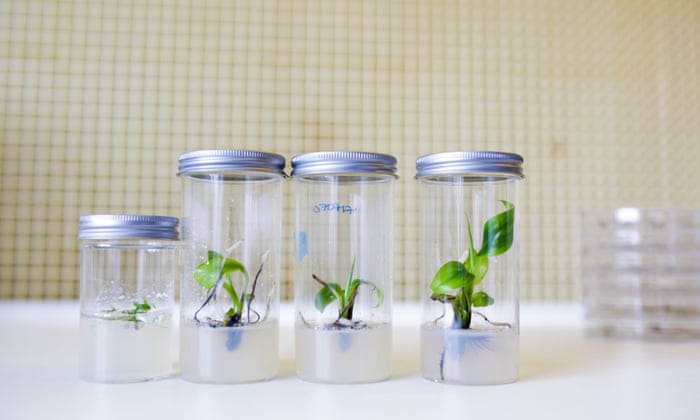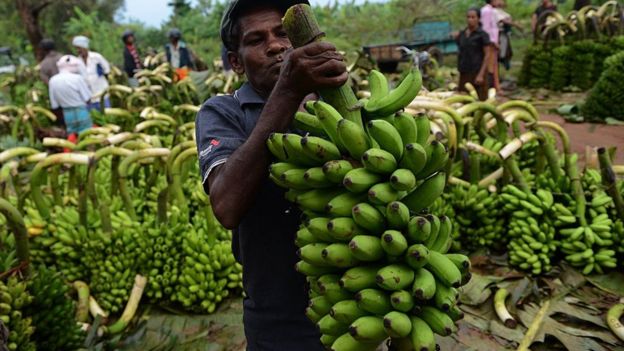Saving the Cavendish Banana from Fungal Extinction
"Bananas are the fourth most-important food crop globally. It's the most consumed and produced food."
"The impact [of the fungus threatening banana crops] is potentially catastrophic for the banana industry ... the exposure here is massive because you have a single banana [favoured variant]. The weight on our shoulders as a company today is very high. There's not a lot of people solving this massive banana issue in the world."
"People have very strong feelings toward bananas and the idea of this crop being potentially lost due to this disease highlights the need to address it."
"Panama disease and a few other very big diseases that are already quite spread have the potential to shift the balance from a slim margin to a losing industry. It's hard for me to imagine today any solution not coming from gene editing."
Gilad Gershon, CEO, Tropic Biosciences
"The disease is a significant threat for the banana sector, particularly for the Cavendish bananas, not only from the supply point of view but also for the economies of the banana-producing countries and livelihoods of smallholder producers."
Fazil Dusunceli, agriculture officer, United Nations' Food and Agriculture Organization
 |
| Researchers from Tropic Biosciences are working to create more resilient bananas. Photograph: Tatum Reid/Tropic Biosciences |
Tropical race 4 (TR4) is a soil-borne strain of t he Fusarium wilt fungus and for the past twenty years and more it has been wending its presence around the world from Southeast Asia. The global banana industry is only too well aware of the threat this fungus poses to the most-loved of all fruits. Discovered on a farm in Mozambique in 2013, it made its way to Colombia and a national state of emergency ensued for this major crop, vital to Colombia's agricultural economy.
With the arrival of the disease to South America, the world's fourth-largest exporter of bananas is in dire straits facing a disease known to disrupt the vascular systems of plants and which can survive in soil for decades. Because a single strain of the fruit, known as the Cavendish dominates the global industry, bananas are highly susceptible to the disease. The Cavendish banana accounts for 50 percent of global production, constituting close to 100 percent of the global export market, with a value of over $13.6 billion.
 |
Tropic Biosciences raised $10 million in a Series A round in 2018 as a startup, which moved to Norwich, England in 2015, from Israel. The company relies on a team of close to 40 scientists and researchers focusing on editing the genes of bananas to protect them from the onset of such diseases. As the fungus spreads, the company has doubled down on its efforts to discover a method of protecting the Cavendish banana from extinction.
Because the bananas are asexual, they cannot be bred to eliminate the genes placing them at risk, so the company has placed its gene-editing technology to work with a view to mitigating the fungus's challenge to the bananas' health and longevity as an ongoing viable and valuable world crop. It is a given that the population of the Tropics is set to grow by over 500 million people by 2030, reflecting half the global population and creating a need for increased productivity and environmentally friendly agricultural crops.
The plight of the Cavendish strain of banana echoes that of the Gros Michel in the first half of the 20th Century; the most popular variant of the fruit at the time. Sprawling plantations in such places as Costa Rica and Guatemala depended on a genetically limited crop represented by the Gros Michel. The profitable fruit was assaulted by Tropical race 1, a strain of the fungal Panama disease which infected the fruit and brought its production to a conclusive halt. History is in the process of repeating itself.
 |
Gene editing technologies are now a critical tool for the biotech startup stationed in Norwich, in the aim of protecting the banana. The technology works through using a banana flower from somewhere like Colombia, reducing it to millions of stem cells in cultures, and finally sequences of the Cavendish banana genes that make it susceptible to TR4 are cut out. When the cells grow back in a setting lit with pink neon lights at a temperature of 26C, they become edited seedlings to be returned to the world of agriculture for full-scale growth.
Other difficulties have arisen however, example: once the fungus has been established in a field, it cannot be eradicated and the plot is no longer viable for growing the susceptible fruit and areas affected by the latest strain have reached 100,000 hectares globally, while "The risk of expansion is real", warns Fazil Dusunceli.
"The efficiency of taking the CRISPR into the cells is low. It's not like in humans, the plants have cell walls", comments Dr.Ofir Meir, chief technology officer at Tropic Biosciences. Society, in the opinion of Gilad Gershon, has shown itself not to be amenable to accept artificially altered foods. Even so, the real solution according to experts in the field, would be to prevent the disease with expert control and management before a banana field is breeched.
 |
| There are numerous local breeds of banana around the world but by far the most exported is the Cavendish Getty Images |
Labels: Banana Crops, Food Science, Fungal Threats, Research

0 Comments:
Post a Comment
<< Home